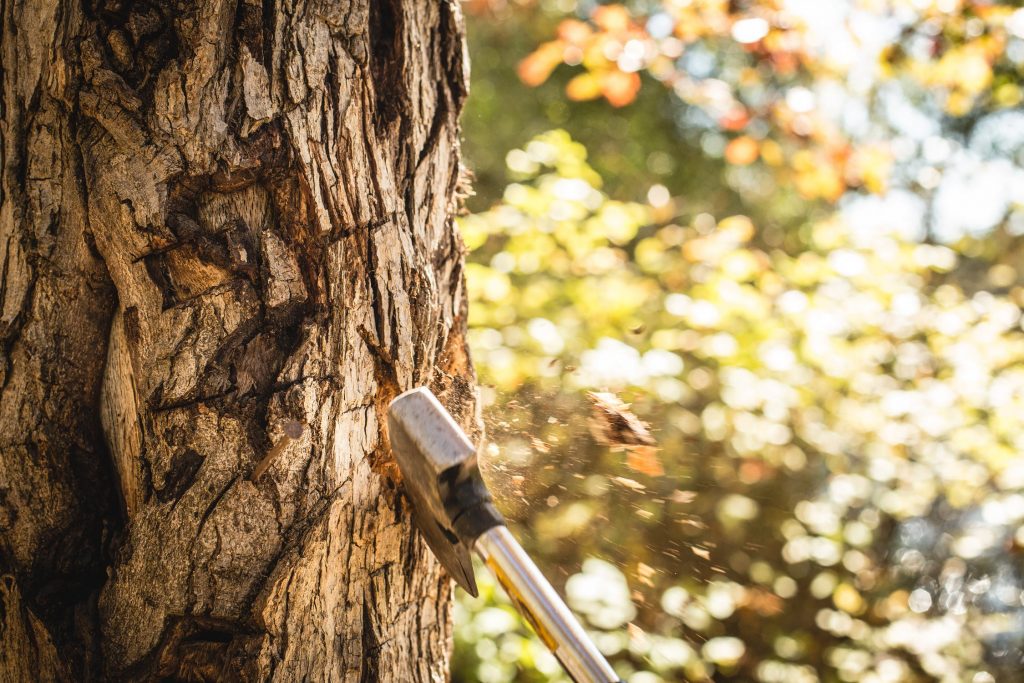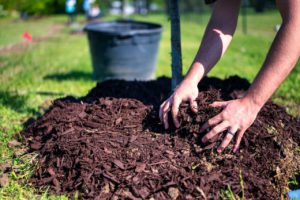Tasmania, our smallest state, is famous for its dense jungle, glacier-formed mountains and its native woods, 45 per cent of that are protected in reserves. In June 2016, the Tasmanian government announced the development of a policy that would encourage the use of timber products in construction and architecture. It’s the first state in Australia to do so, and also the policy would require that timber be considered at the initial phases of all public buildings, such as building, fit-out, heating and energy.
This policy helped to encourage the local timber industry and promote more sustainable development. But how does it impact residential architecture in Tasmania? We ask a variety of business experts and architects in the forefront of timber architecture about the way the policy can shape the future design of new homes, as well as taking a look at how we got here.
History of Timber Craftsmanship in Tasmania
The first British settlers arrived at what was then called Van Diemen’s Land in the early 1800s. They created settlements and put convicts to operate clearing forests for timber to be used for local construction and shipbuilding for the British navy. Since forest-based industries expanded through the 1800s, Tasmania supplied timber across the colonies and also to Britain, spurring economic growth and fuelling the need for the management of public forests.
It’s been stated that this long tradition of wood craftsmanship has caused a multi-generational source of knowledge about how to develop, manage and work with Timber. There has to be a duty to tap into the knowledge, cultivate it, and above all ensure it is done with the greatest environmental practices. Sourcing a respectable and environmentally responsible tree removal services, for example, is important.
Tasmania’s New Wood-Encouragement Policy
It’s been declared that the Tasmanian Government’s coverage will need timber products to be thought about in public building projects. The statement followed changes to Australia’s National Construction Code which open the way for Volume Timber Construction, a construction procedure using engineered timber products as the primary structural material of choice. This change allows for timber products, such as glulam, or glue-laminated wood, which will be a locally accessible and a sustainable product.
The alterations to the building code put Australia on par with other advanced countries and are expected to spur demand for local lumber needed for the fabrication of glulam. Encouraging the utilization of wood products is a portion of the Tasmanian State Government’s commitment to the local forestry industry.
How Will the Policy Contribute to Sustainable Development?
Timber is a renewable energy resource that as a building material can contribute to a decrease in greenhouse gas emissions. There are three points to consider on why business professionals must choose timber as a first option building material.
◦ Utilization of renewable sources
Timber, unlike concrete, brick and steel, is the only major building material resource that is renewable, making it a main selection for sustainable growth.
◦ Reduction in greenhouse gas emissions
A July 2016 report from the UN Food and Agriculture Organization has emphasized the significant role that green or resource-efficient wood-based buildings may perform at the transition into a sustainable built environment whilst providing economic advantages at the same time.
More than 20 per cent of Australia’s carbon emissions come from constructing and maintaining the built environment. Utilizing wood and wood-based substances could result in a substantial reduction in greenhouse gas emissions, and finally play a significant part in addressing the effects of climate change.
◦ Sustainable forestry management
A vital element of responsibly sourced wood products is that forest management methods preserve natural biodiversity for healthy and viable animal and bird populations. Tasmania’s practice codes and laws aim to ensure woods operations protect local environments.

How Will the Policy Contribute to Residential Architecture and Construction?
Timber has advantages not just for sustainability, business growth and stimulating the local economy, but also for domestic spaces and environments. There are five expected benefits from the aid of this policy in residential architecture.
1. Up-skilling architects and more sophisticated architecture
A lot of architects in Tasmania already use timber in domestic architecture. On the other hand, the policy has the capability to influence multi-residential building development, directly affect public housing policy, and influence the ability of architects to understand building with timber better.
New boutique hotels around Tasmania has started to embrace this policy. It’s hoped that more will follow suit and the quantity of care put into these commercial building will trickle to the public housing sector and affect the up-skilling of careers at the ways they could use wood more efficiently.
2. Aesthetic and atmospheric qualities of timber environments
Timber provides a sense of organic heat, softness and tactility that few other substances have. It doesn’t just apply to construction materials; furnitures made from wood that is cut responsibly from a tree can be intriguing statement bits for almost any layout area.
It has been stated that timber is versatile and allows you to apply unique remedies depending on the project. Timber not only adds warmth to a space, but wood is also cost effective and at the exact same time connected with luxury and quality.
Seeing more timber in public buildings will encourage individuals to want it in their personal buildings. When people practice sophistication and care on the process of making public places, it becomes something akin to a ripple effect. Timber is an architectural magic, able to engage the senses when installed in a room.
3. Psychological and physiological benefits of timber environments
The advantages of timber also extend to the emotional and physiological. It was found that exposure to wood products and timber interiors has positive health benefits, like those made by spending some time in nature.
The report found many individuals are innately drawn towards timber. It is also shown that being surrounded by timber at home, work or school are beneficial for the body, brain and environment. In addition, wood elicits feelings of warmth, relaxation and relaxation, and may even help reduce recovery times for the ill and injured, which contributes to shortened hospital stays. This applies to hotels too, as utilizing wood in resorts ensures that clients have a cozy experience during their stay.
4. Renewable heating resource
The policy will encourage wood to likewise be considered for heating and energy. It has been said that today wood constitutes roughly 20 to 25 per cent of all renewable energy produced in Australia, in comparison to approximately 46 percent in Europe, which will be predominantly in heat generation. Wood, as a fuel type, is mostly used for heat production in Tasmania.
5. Improved wood goods and construction
While most wood housing jobs involve timber-framed construction, steel or engineered timber beams are sometimes used in long-span scenarios.
It must be said that while timber is still an attractive and practical choice, it is very important to use the correct kind of timber products and therapy program. Engineered wood minimizes the effects of weathering, and wood preservatives can stop decaying. There are no dedicated bushfire-prone regions’ defined in Tasmania, however, timber typically burns in a predictable fashion, making managing the fire simpler. The effects of shrinkage and swelling are significantly reduced in engineered-timber merchandise, with glulam being exceptional in regards to fire resistance, noise insulation and heat insulation.





